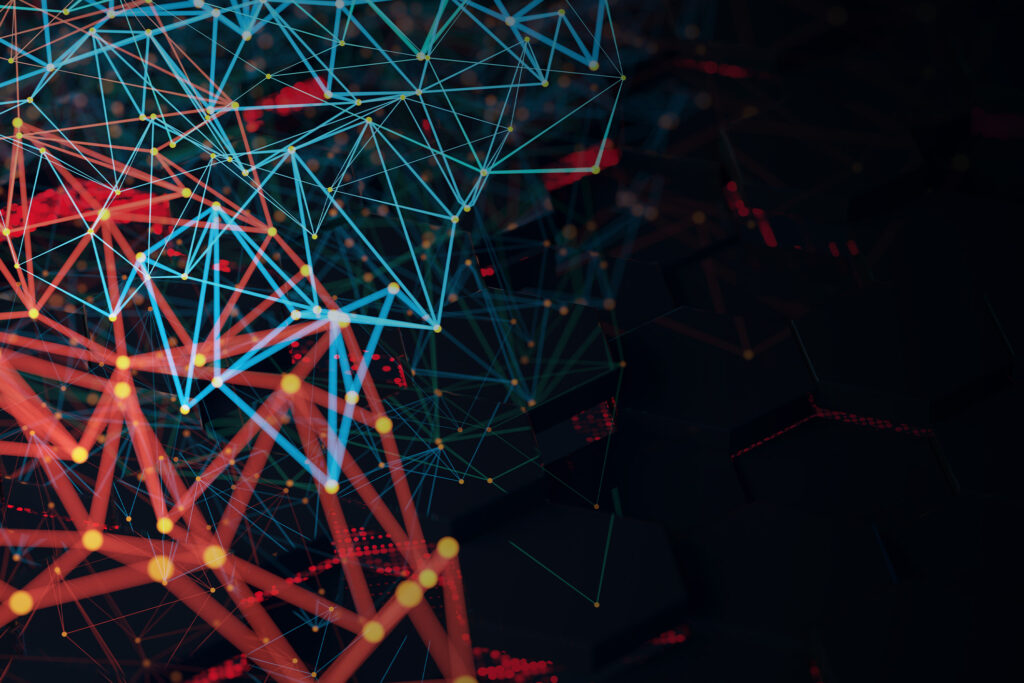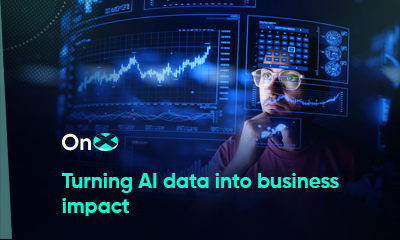
Artificial intelligence (AI) is revolutionizing IT and many other sectors. Increasingly complex data environments are driving the rapid adoption of AI in IT operations (aka AIOps) for improvements in areas from operations to security and customer experience. Other factors include expanded edge networking, IoT devices, and the continued migration of infrastructure to cloud-based environments. Another driver is the need for fast technical support ticket resolution.
A recent report from Accenture showed that 43% of customer service agents often have a queue of 100 or more tickets. AIOps provides valuable insight when managing complicated data architectures and networks.k
While many fear the availability of AI will eliminate jobs, AIOps is a powerful set of tools that help existing IT personnel to do their work more efficiently and proactively address potential issues. AI gathers, organizes, and filters incredible amounts of data to home in on the root causes of network traffic slowdowns, bottlenecks, and other problems. And machine learning helps AI get better at understanding what issues are important.
With the guiding hand of a seasoned IT provider, AI is an extremely valuable portfolio of tools for improving efficiency, security, support, and customer experience.
What exactly is AIOps?
Gartner coined artificial intelligence for IT operations (AIOps) to identify how machine learning and natural language processors are deployed in IT environments. AI operations include big data, analysis solutions, automated processes, and machine learning.
AIOPs have five main functions:
- Gather data. AI collects vast data stores from different infrastructures like networks, tech support tickets, apps, and security platforms. AIOps gives users detailed and high-level visibility into traffic and the overall health of a system.
- Translate noise into signal. Pattern recognition and real-time monitoring decipher massive amounts of data to discover indicators and warning signs.
- Find and report issues. AI rapidly flags errors and often suggests ways to fix them.
- Predictions. As AI learns over time, it develops models and can spot potential threats in the long term.
- Automation. One of the most talked about features is the ability of some AIOps tools to self-heal or remediate problems without oversight. OnX recommends combining automation with the supervision of IT professionals. Otherwise, a company can quickly succumb to one of the AI pitfalls discussed later in this post.
Also read: Enhance developer experience by modernizing your legacy technology
How AI creates better customer experiences
At first glance, AIOps might only seem useful for an IT team. But a closer look reveals that AI provides multiple benefits for customers by creating better end-user experiences, including:
- Improved dependability and access to networks and applications.
- Faster support ticket resolution and mean time to recovery (MTTR).
- Increased productivity through next-gen collaboration tools.
AIOps provides IT teams with incredibly stable experiences with solutions, such as proactive problem management and real-time monitoring. Another benefit is enhanced collaboration in an organization after removing data from departmental silos. When each member of a company’s workforce has access to data, insights can be analyzed and transformed into action.
AIOps provides significant benefits for IT teams, as well, including:
- Decreased OpEx spending.
- Better developer experience that speeds software time to market.
- Streamlined IT operations and management.
- Minimized downtime.
- Better security, especially at the network edge.
Download the E-book: Thrive in a digital economy
AIOps use cases
- Security. AI identifies potential threats by tracking anomalies. Outliers within historical data often suggest patterns that could indicate malicious activity. An example is how advanced threat detection tools sift through large swaths of the internet to point out developing ransomware threats.
- Analyze root causes. IT teams have lost many hours treating symptomatic problems. AIOps is particularly good at hunting down the root causes of technical issues. It then recommends remediation steps and preventative measures to keep the same problem from cropping up.
- Performance monitoring. On-premises data centers were once much more manageable. But with the move to distributed and hybrid work models, networks, applications, and various processes have transitioned into complex multi-cloud environments at the edge. AIOps monitors and evaluates performance across these dispersed environments with automated reports that provide insight into storage, availability, response times, and other vital metrics. In addition, end-users benefit from the optimized data consumption that results from data correlation and aggregation.
- Cloud adoption and migration. An organization can rarely migrate its entire IT environment to the Cloud in one migration. This situation can lead to densely interconnected hybrid clouds. AIOps offers greater visibility into these connected systems and helps to simplify cloud migration with automation tools.
- DevOps. DevOps aims to foster greater trust and shared responsibilities between developers and admin. AIOps works toward this goal by supplying Devs with additional automation tools and granting greater visibility and control to both Devs and sysadmin.
Learn more: OnX advanced automation promotes IT excellence and enterprise modernization
Pitfalls of implementing AIOps
When a car broke down in years past, a visit to the mechanic might take several days to diagnose the issue. But now, a mechanic plugs a device into the car that communicates with the onboard computer to pinpoint the cause of the breakdown.
Similarly, you can think of AIOps as a diagnostic tool. IT professionals can utilize AI to identify “breakdowns” in the environment efficiently. Just as you need an experienced mechanic to read and interpret the diagnostic machine correctly, AIOps need an experienced IT professional to “read” the AI tools, sort out the false alarms, and “teach” machine learning solutions what to look for.
No context
At OnX, our team utilizes AIOps tools to execute vulnerability scanning. A scan may identify hundreds of thousands of vulnerabilities. Without context, an organization may panic and throw money at the problem. But AIOps is not good at understanding which “vulnerabilities” are already secured. One of our certified engineers can pinpoint if any of the vulnerabilities are concerns and quickly fix them.
More noise
AIOps, unfortunately, lack the finesse that comes with years of experience. Just as a smart doorbell can’t differentiate a delivery driver from a home invader, AIOps can generate much more unnecessary data that gum up the works.
Adverse changes
Like students, AI can “learn” the wrong lesson. For example, an AIOps tool might be trained to recognize that the MDU of a switch is incorrect and take steps to lower it. However, this would affect traffic for every other system connected to that switch.
AI tools can only be directed, optimized, and “taught” to make the correct assumptions through expert management.
Build better customer experiences with
Gartner predicts that AIOps adoption will grow 30% this year, which marks 25% growth since 2019. Evolving IT environments are pushing organizations to look to AIOps for greater visibility, automation, protection against malware, and data insights. Many companies rely on AI to boost customer experience by providing improved product access and speeding up tech support resolution. It is becoming increasingly clear that when IT departments and organizations as a whole take advantage of the greater collaboration and insights provided by AI, the team can better serve their end-users.
But poor implementation of AIOps can lead to adverse side effects. OnX experts can advise your team on which AI tools to adopt to drive greater efficiencies and business outcomes. But OnX also puts you in the driver’s seat of AI by pairing the speed and efficiency of AIOps with the deep experience of our engineers.
Reach out to our team today to learn more about adopting AI to enhance customer experience.














